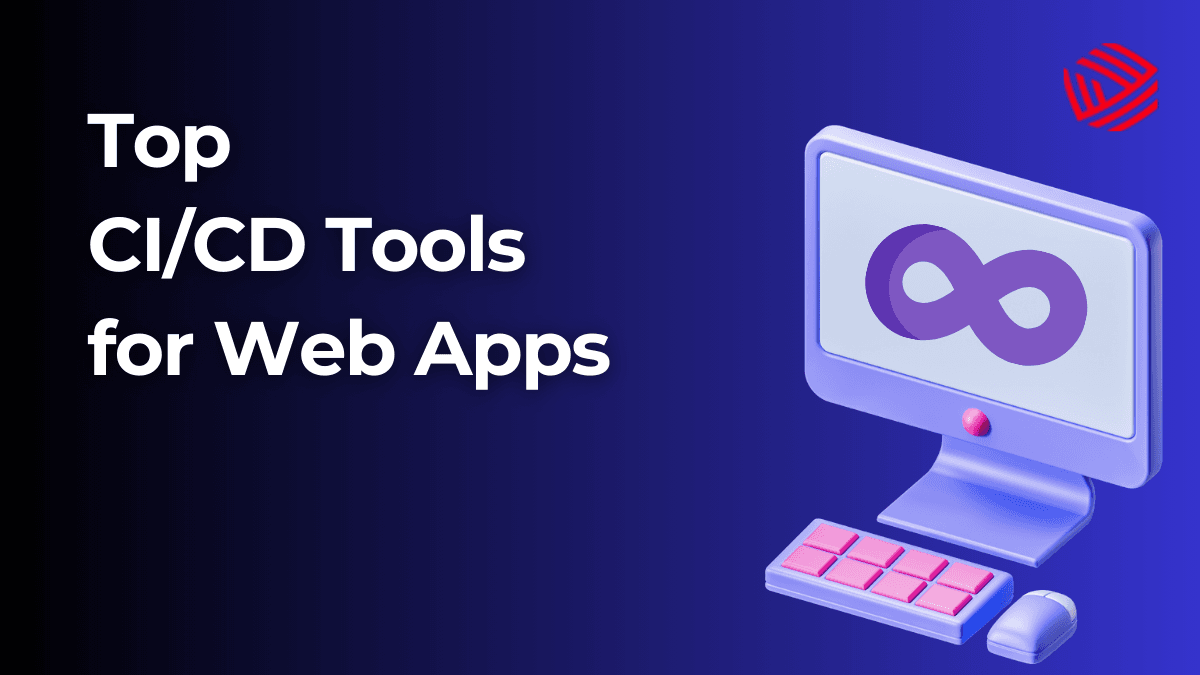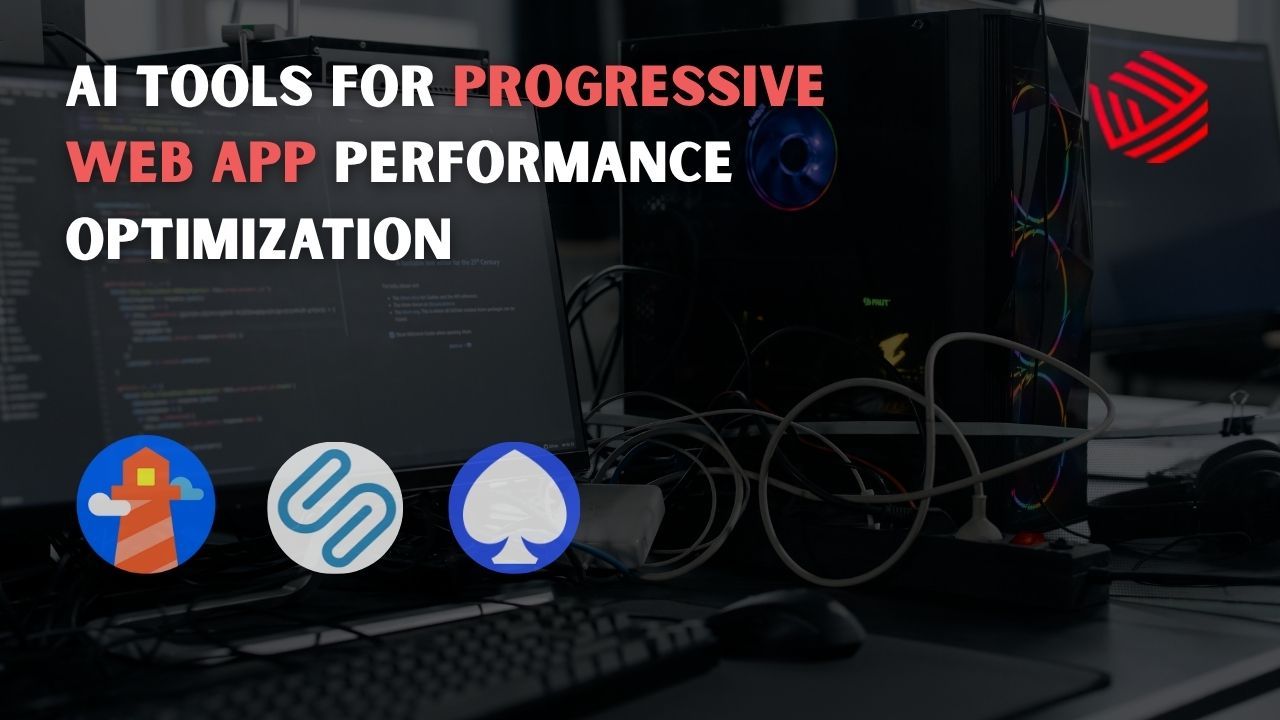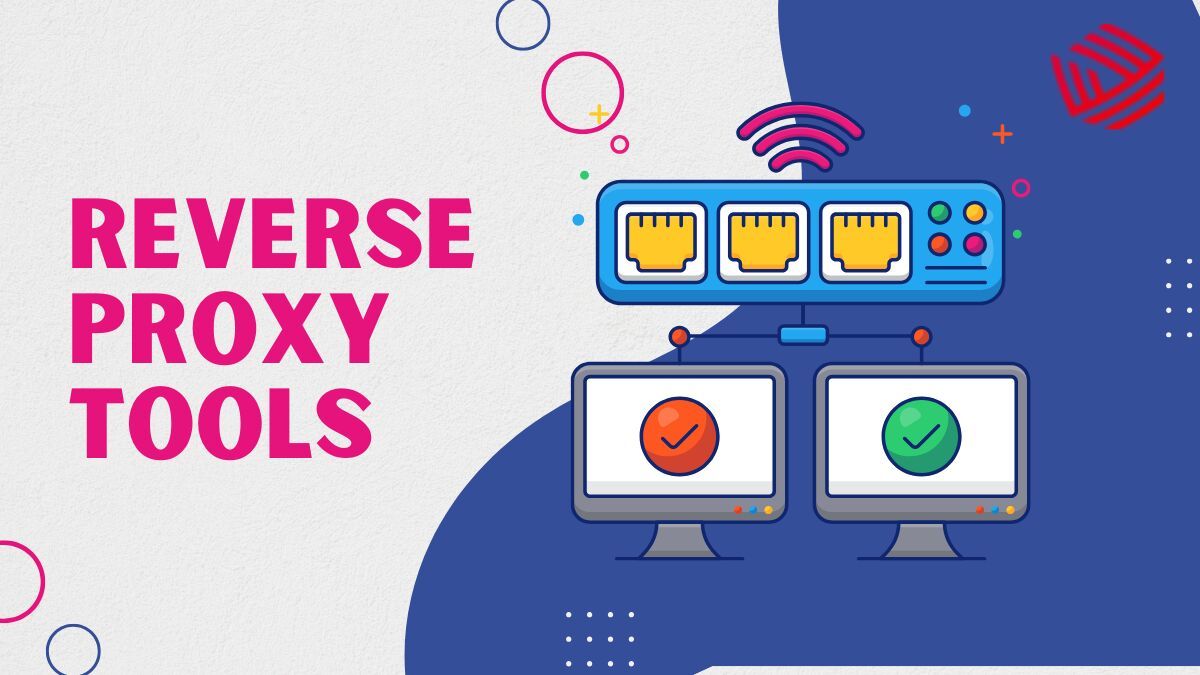In the rapidly evolving digital world, user experience (UX) can make or break a product. Whether you're a startup launching a new website or an enterprise rolling out a platform revamp, gathering direct user feedback is essential. This is where Website Feedback Tools come into play—especially for Usability Testing and User Acceptance Testing (UAT). These tools enable product teams, developers, and UX researchers to identify bugs, improve interfaces, and ensure the product aligns with user expectations.
What Are Website Feedback Tools?
Website Feedback Tools are digital applications or platforms designed to collect user input about a website’s performance, design, and usability. They enable real-time or post-session feedback from users interacting with a website or application. This feedback can be in the form of bug reports, surveys, comments, heatmaps, video recordings, or on-screen annotations.
These tools bridge the gap between what developers think users want and what users actually experience.
Importance of Feedback Tools in Usability Testing and UAT
1. Usability Testing
Usability testing focuses on how easily users can interact with your product. It helps identify:
- Confusing UI components
- Inefficient workflows
- Missing information
- Poor navigation structures
Feedback tools allow real users to record issues and express their frustration or appreciation as they interact with the product—providing data-driven insights.
2. User Acceptance Testing (UAT)
UAT is the final phase before a product goes live, where actual end-users test the system to ensure it can handle real-world scenarios. Feedback tools allow testers to:
- Annotate bugs and UX issues in real-time
- Submit tickets or comments directly from the application
- Track test coverage and outcomes
Both usability testing and UAT rely on feedback tools to reduce guesswork and validate that the final product meets user expectations.
Top Website Feedback Tools (Usability & UAT)
1. Hotjar

Hotjar is a leading behavior analytics tool used by thousands of companies to improve user experience and performance. It provides detailed heatmaps that visualize where users click, scroll, or move their cursors. With session replays, businesses can watch real-time recordings of how visitors navigate the website, helping identify friction points and confusing interactions. Hotjar’s feedback widgets let users submit suggestions, highlight issues, or express frustration without leaving the site. You can also launch targeted surveys based on user behavior or page visits. Development of projects gets easy with experienced software engineers ensuring requirements fullfillment and reliable solutions.
This makes it especially valuable during usability testing when you want immediate, context-rich insights. The incoming feedback feature allows real-time reactions with emojis and optional comments, helping to capture user sentiment in the moment. It integrates well with tools like Google Analytics, HubSpot, and Slack, giving product teams a comprehensive view of user behavior. Hotjar is ideal for UX designers, marketers, and developers seeking a balance of qualitative and quantitative feedback.
2. Userback
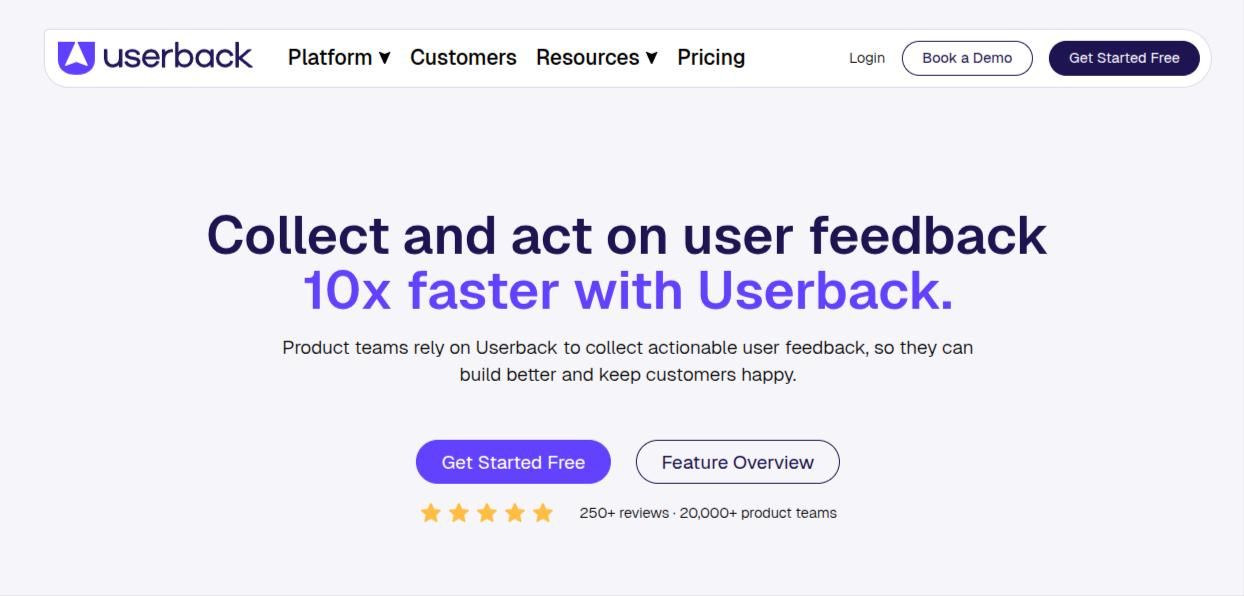
Userback is a visual feedback and bug reporting tool designed to streamline website testing, especially during UAT cycles. It allows users and testers to capture on-screen feedback via screenshots, screen recordings, and annotations. Testers can point out specific UI problems, input issues, or performance bugs directly on the live site without switching tabs or opening separate reporting tools. With automatic metadata capture, Userback logs browser details, screen resolution, and console errors along with each submission—saving developers hours of debugging. Seamless web designs are now the standard, and web developers with years of experience can help in creation of such user experiences with ease.
It’s particularly useful in agile environments where developers and testers need to iterate quickly. The widget is customizable and can be embedded on any site or app, providing real-time collaboration with clients or internal QA teams. Seamless integrations with Trello, Jira, ClickUp, and Slack ensure feedback goes directly into your task management system. Whether you're testing a new SaaS product or running a live client review, Userback simplifies the communication of bugs and feature requests.
3. Useberry
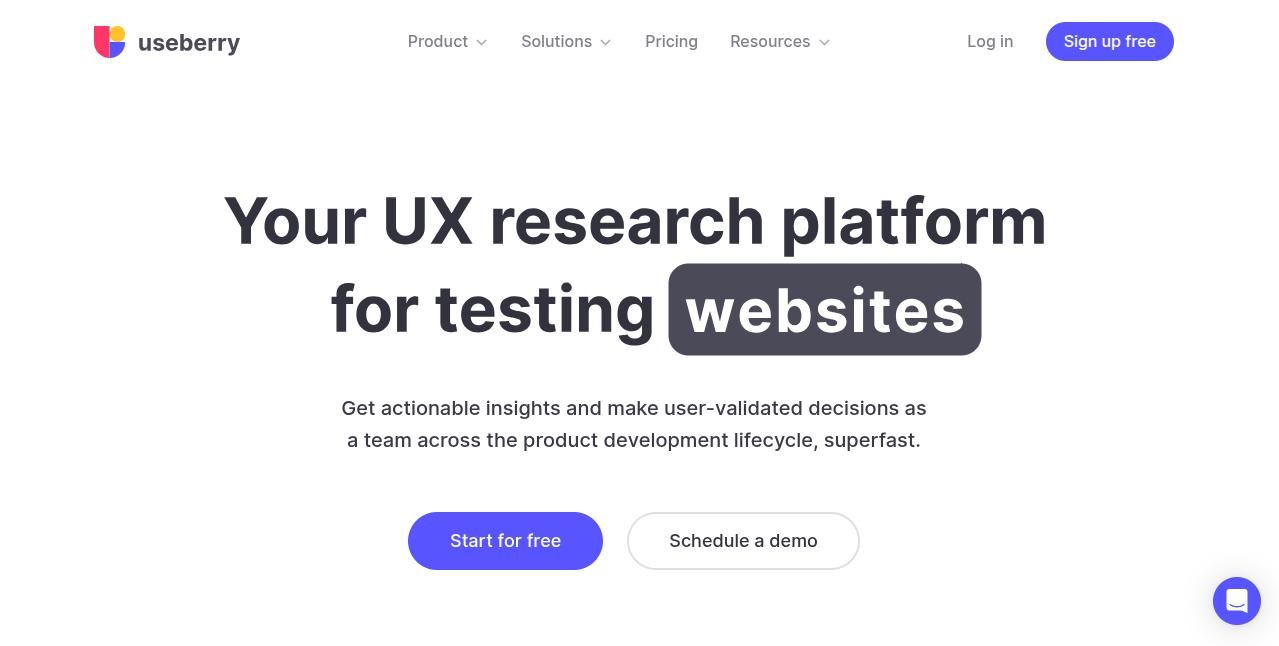
Useberry is a powerful usability testing tool tailored for early-stage product design validation. It integrates with Figma, Adobe XD, InVision, and Sketch, allowing teams to run user tests on interactive prototypes before writing a single line of code. With real-time session analysis, Useberry delivers insights into user flows, click paths, drop-offs, and task completion rates. It supports different testing formats such as preference tests, first-click tests, and five-second tests, giving designers concrete data to inform design choices. Starting an online e-commerce strore is now breeze with shopify developers creating beautiful user experiences and results in increase of brand awareness.
The built-in heatmaps highlight areas of user focus, helping identify confusing navigation or CTA placements. Useberry enables remote usability testing, so you can invite participants from anywhere and get results within hours. Ideal for UX/UI teams and product managers, Useberry removes the guesswork from design decisions and helps eliminate usability issues early in the development cycle. Its clean reporting dashboards also make it easy to share test results with stakeholders, speeding up approvals and iterations.
4. BugHerd
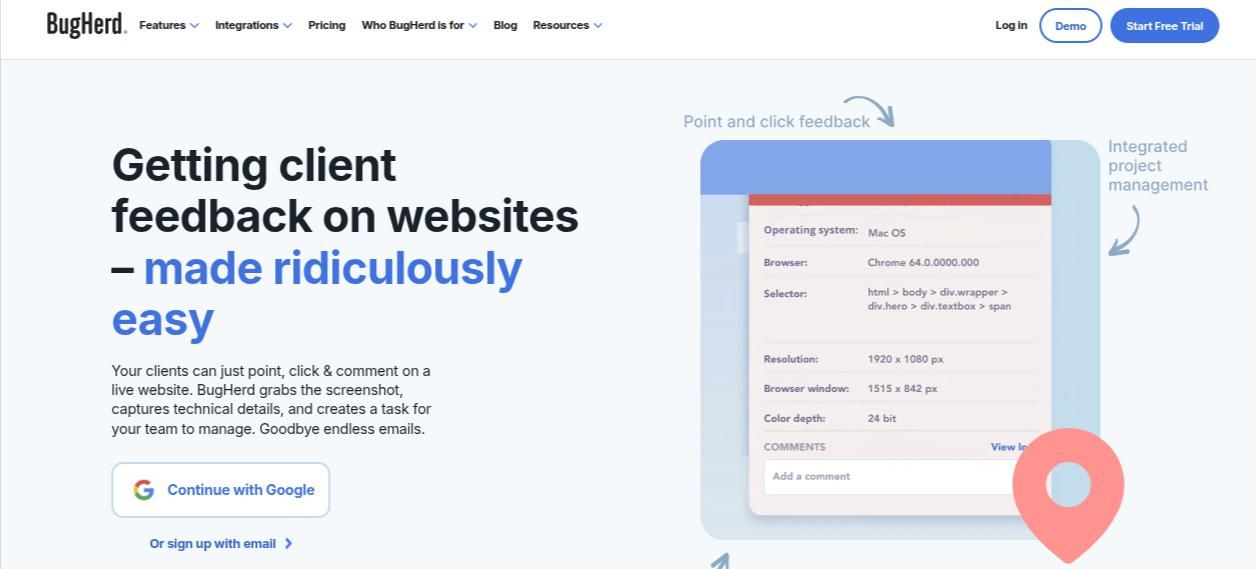
BugHerd is a visual bug tracking tool that transforms your website into a collaborative feedback environment. Instead of reporting issues through screenshots and emails, testers can simply click on an element, leave a comment, and BugHerd captures the issue along with browser, OS, and screen data. It acts like a sticky-note system for websites, allowing designers, developers, and clients to see and resolve issues visually. The task board in BugHerd is Kanban-style, making it easy to organize, assign, and prioritize bugs directly from the interface. Building secure ecommerce stores with reliablity and scalability is now easy with magento developers.
This visual, user-friendly system is especially useful for UAT processes where clients or non-technical users are providing feedback. BugHerd supports integrations with Jira, GitHub, Trello, Slack, and more, so it fits into existing development workflows. Whether you're testing a landing page or an enterprise SaaS platform, BugHerd reduces communication friction and ensures bugs don’t fall through the cracks—making it indispensable for agencies and product teams alike.
5. Crazy Egg
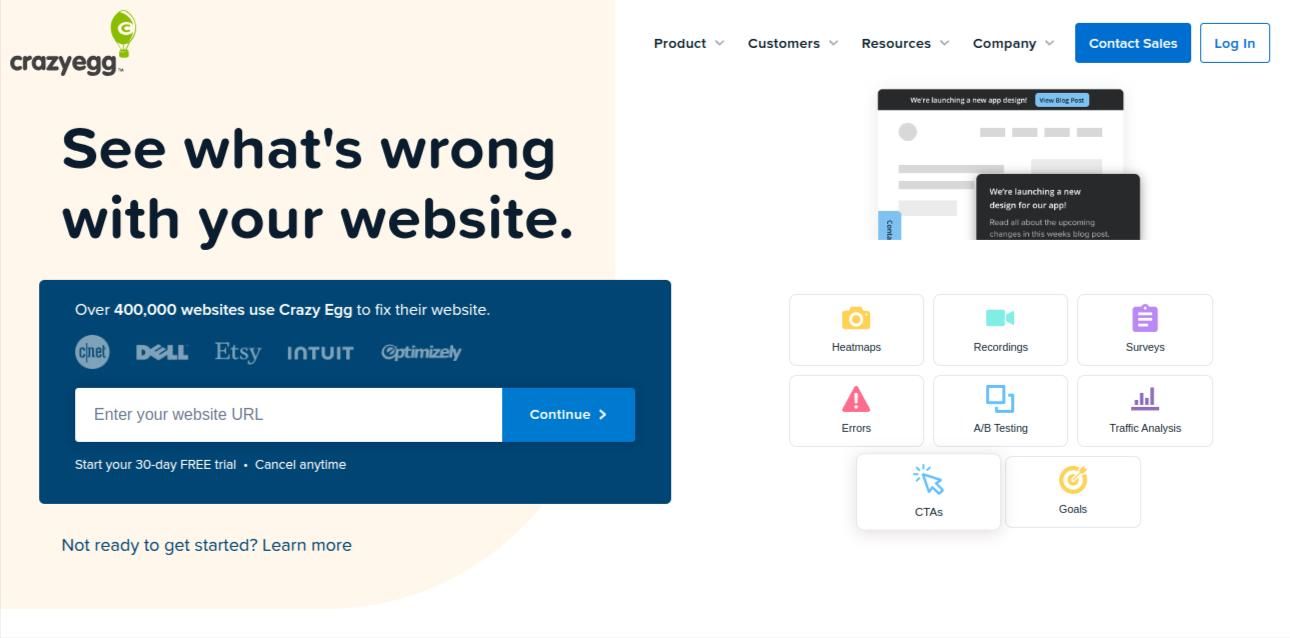
Crazy Egg is a behavior analytics platform that helps businesses optimize their websites by understanding how users interact with them. Its signature features include scroll maps, confetti reports, and click tracking, which together give deep insight into what users see, ignore, or click on. With Crazy Egg, you can identify elements that receive high or low engagement and adjust content placement accordingly. A unique feature is its A/B testing tool, which lets you create and test design variations without needing a developer.
The tool also offers session recordings to watch user interactions in real-time, making it easy to spot usability issues. Crazy Egg provides overlay and list reports that detail where each visitor clicks, helping UX teams discover areas for improvement. This tool is especially useful for marketing teams seeking to increase conversions and reduce bounce rates. For usability testing and post-deployment optimization, Crazy Egg delivers actionable data in an intuitive visual format.
6. Usersnap

Usersnap is a versatile customer feedback and bug tracking tool designed for product development and UAT. It allows users to report issues or suggest improvements via annotated screenshots, video recordings, or emoji-based ratings. What makes Usersnap unique is its ability to handle multiple feedback channels—product feedback, customer support tickets, beta test results, and bug tracking—all in one place. It supports in-app feedback widgets that can be customized to appear based on user behavior, page URL, or session attributes.
During UAT, Usersnap automatically captures browser data, user flow, and even JavaScript errors. It also provides a detailed dashboard where you can prioritize and assign issues to developers or designers. With integrations for Intercom, Jira, Zendesk, and more, it fits perfectly into modern development pipelines. Whether you're launching a B2B SaaS or a consumer app, Usersnap enables a tight feedback loop that accelerates product improvements and enhances the user experience.
7. Survicate
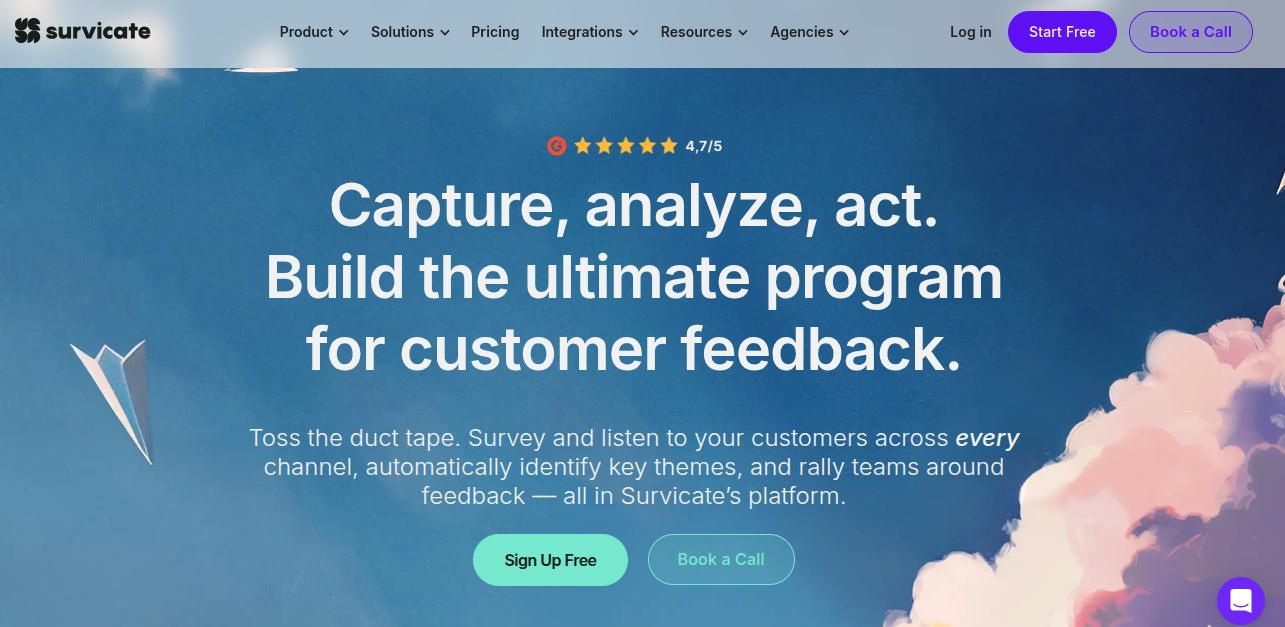
Survicate specializes in collecting qualitative feedback through targeted surveys and pop-up forms. It integrates directly into your website or web app and allows you to ask the right questions at the right time—for example, after a user completes a task or visits a specific page. You can measure Net Promoter Score (NPS), Customer Satisfaction (CSAT), and Customer Effort Score (CES), all of which provide insight into the user experience. Survicate’s survey builder is easy to use and offers templates for common use cases like onboarding feedback or feature requests.
During UAT or usability testing, Survicate can gather subjective input that complements the more technical insights from heatmaps or session recordings. It integrates with popular CRM and marketing automation tools like HubSpot, Intercom, and Salesforce. By combining behavioral and attitudinal data, Survicate enables deeper customer understanding, making it a valuable tool for product managers, UX researchers, and marketers alike.
8. Qualaroo

Qualaroo offers contextual, real-time survey feedback with its proprietary "Nudges™" technology. Unlike traditional feedback forms, Qualaroo surveys appear at just the right moment—when a user hesitates, completes a task, or is about to exit. These smart surveys can be triggered based on user behavior, device type, referral source, or session duration. The platform also supports sentiment analysis using IBM Watson's NLP engine, helping you understand user emotions behind the feedback. Ideal for UX researchers and marketers, Qualaroo’s micro-surveys can collect insights about user intent, pain points, and satisfaction without disrupting the user experience.
The reporting dashboard provides visual breakdowns of survey responses and trends over time. It’s especially useful during UAT when you want to know if test users find a feature intuitive or confusing. With integrations for tools like Google Analytics, HubSpot, and Zapier, Qualaroo helps align your website development with real user expectations and emotions.
9. FullStory
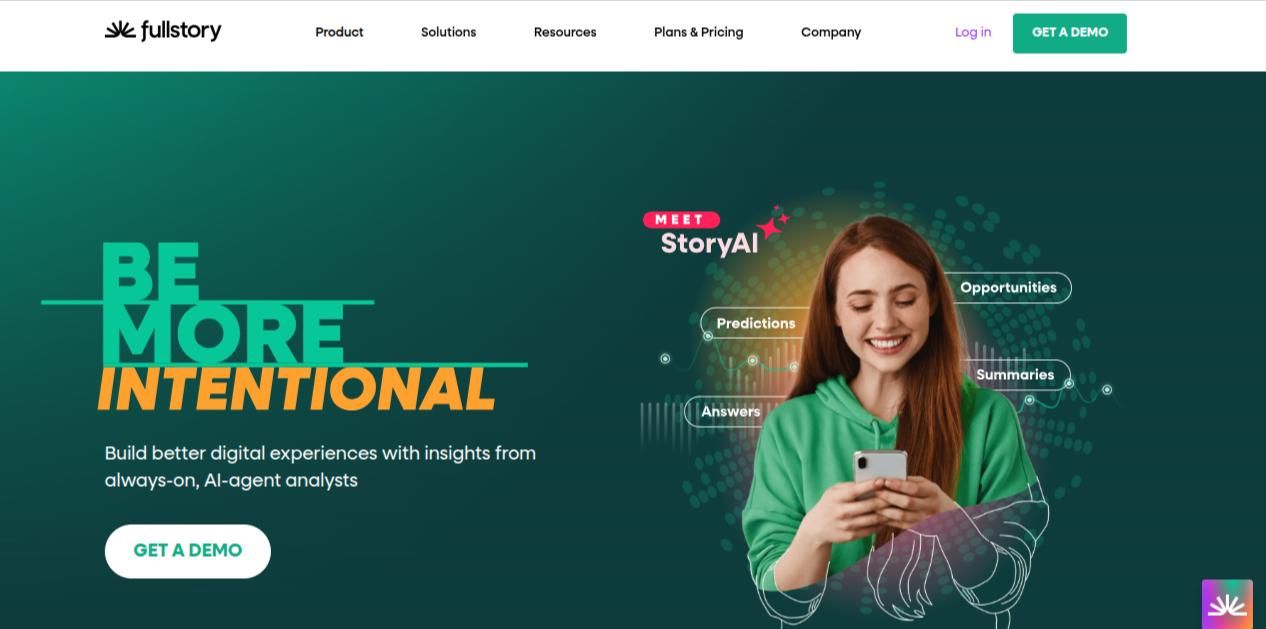
FullStory combines powerful session replay features with advanced analytics to provide a complete view of user behavior. It captures every interaction on your site—clicks, scrolls, keystrokes, and more—creating pixel-perfect replays for in-depth usability analysis. With features like “rage click” detection and “dead click” alerts, FullStory helps identify user frustrations without requiring any direct feedback. It also segments sessions based on behavior patterns, which can be critical for UAT teams testing user scenarios or workflows.
FullStory’s conversion funnel analysis helps optimize user journeys by showing where users drop off or encounter obstacles. Developers appreciate the ability to jump from a user session to the exact code snippet or error that triggered an issue. It’s especially beneficial for SaaS platforms and eCommerce sites looking to reduce friction and improve UX. With GDPR-compliant privacy controls and seamless integration into tech stacks, FullStory is ideal for product teams seeking actionable behavior insights.
10. Maze
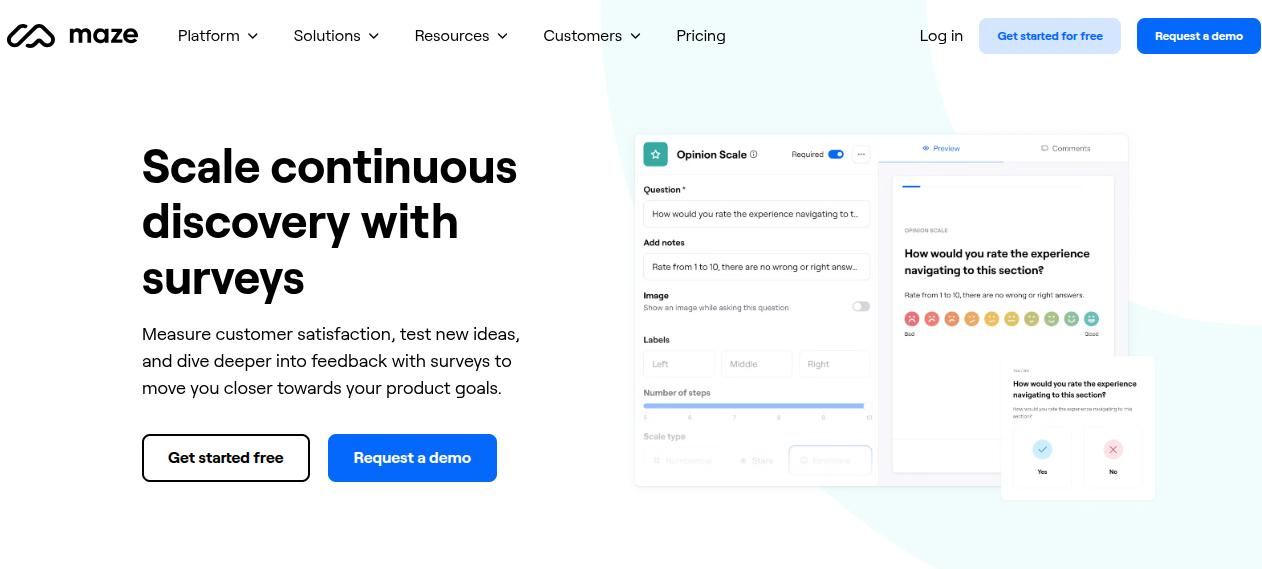
Maze is a rapid testing platform designed for product teams that want to validate prototypes and live experiences at scale. You can run usability tests, card sorting, tree testing, and more—all remotely. Integrated with design tools like Figma, InVision, and Adobe XD, Maze helps gather feedback before development begins. Testers can be recruited internally or via Maze’s tester panel, making it ideal for startups and enterprises alike. Maze measures success rates, misclicks, time-on-task, and paths taken during tests, providing detailed, quantitative usability data. It’s especially useful in remote environments, enabling asynchronous feedback and iteration. Developments of projects front-end to back-end is easy with full stack developers with years of expertise in creating full stack solutions.
Unlike tools that require you to analyze video recordings manually, Maze offers automatic metrics and visual reports that speed up decision-making. The tool supports team collaboration, so designers, product managers, and developers can review insights together. Whether you're validating navigation structures or testing a new feature, Maze provides clarity, speed, and usability precision.
The Critical Role of Website Feedback Tools in Usability & UAT
In the modern digital landscape, where users are increasingly demanding, and competition is at an all-time high, the importance of delivering a seamless, intuitive, and engaging web experience cannot be overstated. Websites are no longer static brochures—they are dynamic, interactive platforms meant to solve real problems, drive engagement, and generate business value. In this context, website feedback tools have emerged as indispensable companions for designers, developers, product managers, QA teams, and customer success professionals alike.
Integration of latest features used in development projects like the AI is now very easy with python developers and integrating the python into the projects makes it easy to create custom features easily. Over the course of exploring the top website feedback tools for usability testing and UAT, one thing becomes clear: these tools are not just convenient—they are strategically essential.
Bridging the Gap Between User Expectations and Product Delivery
One of the most challenging aspects of building digital products is the discrepancy between how designers and developers think users behave, and how users actually interact with the platform. Assumptions made during development, even if based on user personas or prior research, can only go so far. What ultimately matters is how real users experience the site in real-time, under real conditions.
Website feedback tools act as a mirror held up to the product. They reveal friction points, missed expectations, and unexpected behavior patterns that no amount of internal testing can fully uncover. Whether it’s a heatmap showing a dead zone where users expect a clickable element, or a video session highlighting how long it takes for a user to complete a task, the insights generated are invaluable for making informed design and development decisions.
Usability Testing: From Guesswork to Evidence-Based Iteration
Usability testing has evolved far beyond moderated lab-based studies. With tools like Hotjar, Useberry, Maze, and Crazy Egg, teams can now conduct remote, unmoderated usability tests that scale and generate results in hours—not weeks. The advantage of embedding feedback directly into the user interface or capturing session replays is that it minimizes the delay between user frustration and developer awareness.
Real-time insights empower product teams to iterate quickly, fix usability issues before they turn into churn, and validate new ideas with actual usage data. Instead of building based on intuition or opinion, teams equipped with usability-focused feedback tools can pivot to evidence-based product development—a hallmark of high-performing digital organizations.
UAT: Reducing the Risk of Post-Launch Failures
User Acceptance Testing (UAT) is a critical gatekeeper before a product or update goes live. It ensures that the software is functional not only from a technical standpoint but also from a business and user perspective. While functional testing might check if a form works, UAT verifies whether that form’s layout, instructions, and workflow are understandable and effective for real users. Website feedback tools like BugHerd, Userback, and Usersnap empower UAT teams to document bugs, usability concerns, and inconsistencies in real time, often with screenshots, screen recordings, and environment metadata automatically attached.
This drastically reduces the back-and-forth between testers and developers. By streamlining the reporting process and surfacing contextual data, these tools enhance the efficiency and accuracy of UAT, reducing the risk of post-launch defects and user dissatisfaction.
Enabling Continuous Improvement with Integrated Workflows
Modern product development thrives on agility and continuous improvement. Feedback tools that integrate with project management platforms like Jira, Trello, GitHub, and Slack offer a seamless way to convert feedback into actionable work items. This integration is more than a convenience—it’s a workflow enabler that transforms user insights into backlog tasks, bug fixes, or roadmap inputs.
Moreover, when tools like Usersnap or Survicate are used consistently over time, they become rich repositories of customer insights. Teams can identify trends in user behavior, validate the impact of design changes, and maintain a continuous dialogue with their users—long after the product has launched.
Enhancing Cross-Functional Collaboration
One of the often overlooked benefits of feedback tools is their ability to unify cross-functional teams around real user issues. Developers, designers, product managers, marketers, and customer support specialists can all view and interpret feedback from their respective lenses. This leads to more holistic decision-making and creates a shared sense of ownership over user experience. Instead of siloed opinions, the team works from a single source of truth—the user's voice.
Improving Customer Loyalty and Satisfaction
Ultimately, websites are built for users. Whether it's an e-commerce site, a SaaS dashboard, a university portal, or a news publication, every click, scroll, and form submission represents a user goal. When users encounter frustration—be it a broken feature, confusing navigation, or slow load times—it directly impacts their perception of the brand.
Feedback tools enable companies to listen proactively, act quickly, and demonstrate responsiveness. This fosters trust and increases the likelihood of long-term loyalty. In a marketplace where users can switch to competitors with a single click, being responsive and user-centric is not just good practice—it’s a competitive advantage.
The Democratization of UX Testing
Previously, usability testing and feedback collection required extensive resources—labs, facilitators, expensive tools. Today, with platforms like Maze, Qualaroo, and FullStory, even small teams can conduct sophisticated UX research and analysis. Whether it’s a solo founder, a startup team, or an enterprise division, everyone now has access to tools that were once the domain of elite UX labs.
This democratization has led to a broader cultural shift where data-driven design and continuous feedback loops are becoming the norm, not the exception. This bodes well for the future of the web, where user-centric design is poised to become a universal standard.
Future Outlook: AI, Automation, and Deeper Insights
Looking ahead, the evolution of website feedback tools is moving toward greater automation, personalization, and AI-powered analysis. Tools will not just report problems—they will begin to predict friction points, suggest fixes, and even auto-prioritize feedback based on user sentiment and business impact.
Imagine a future where feedback is collected, analyzed, categorized, and converted into sprint-ready tasks—automatically. This convergence of AI and UX will not only reduce development cycles but also elevate the quality of digital experiences to new heights.
Conclusion
The best digital experiences are those built with users—not just for them. Website feedback tools turn passive user interactions into active collaboration opportunities, enabling brands to co-create better products in real time. In an era defined by rapid iteration and user-centric thinking, these tools are no longer optional—they are mission-critical. SaaS billing and subscription management is now easy with use of proper tools and software, as the software solutions provide every features with compliance to manage them seamlessly.
By leveraging the right feedback tools for usability and UAT, organizations can:
- Minimize launch-day surprises
- Enhance team productivity
- Create better digital experiences
- Improve user satisfaction and retention
- Stay competitive in an increasingly experience-driven world
In essence, feedback is not just about fixing what’s broken—it’s about uncovering what’s possible. When companies listen deeply, act thoughtfully, and iterate constantly, they don’t just build websites—they build relationships.




